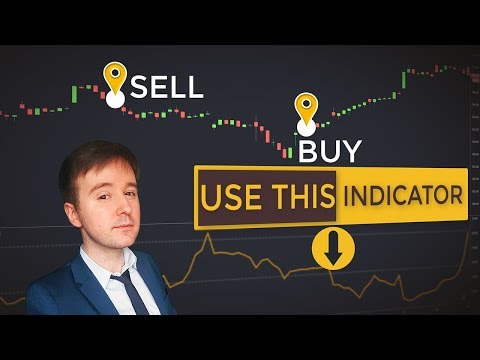
Contents:
Gross profit shows the amount of money a company has made after subtracting unit costs from its revenue. Gross profit and a company's gross profit margin are the leading metrics used in analyzing a company's unit cost efficiency. A higher gross profit margin indicates a company is earning more per dollar of revenue on each product sold.

In the coffee roaster example, the energy cost to heat the roaster would be indirect because it is inexact and difficult to trace to individual products. As such, cost accounting cannot be used on official financial statements and is not GAAP-compliant. After costs have been ascertained, accumulated, classified, and recorded, they must be related to a convenient measure of the quantity of the product or service. Factories might choose productive cost centers whereas an administrative wing might choose an unproductive cost center. Personal cost center is a cost center that consists of a person or group of persons (e.g., departmental foreman, salesman, supervisor, and factory manager). Process cost center is one that consists of a specific process or a continuous sequence of operations.
For example, if an accounting department is able to cut down on wasted time, employees can focus that saved time more productively on value-added tasks. If a coffee roaster spends five hours roasting coffee, the direct costs of the finished product include the labor hours of the roaster and the cost of the coffee beans. According to the Institute of Cost and Management Accountants, "Impersonal cost center consists of a location of item of equipment whereas personal cost center consists of a person or a group of persons."
Companies use marginal analysis as to help them maximize their potential profits. Cost-accounting systems ,and the techniques that are used with them, can have a high start-up cost to develop and implement. Training accounting staff and managers on esoteric and often complex systems takes time and effort, and mistakes may be made early on. Higher-skilledaccountantsandauditorsare likely to charge more for their services when evaluating a cost-accounting system than a standardized one like GAAP. These use a single standard or unit of measurement of the goods manufactured (e.g., per piece, per kilogram, per quintal, per ton, per gallon, or per meter).
Having a clear returns policy and making the process fast and easy for the customer is essential. While you can always try to get customers to spend more , the root cause of low margins is often high costs for the business. Take the case of a small ecommerce business called PetsCo, which produced 100 units of an 80 lb bag of premium dog food in February 2022. As you can see from the calculator above, calculating cost per unit includes a few main components. Enter the values below, and hit “Calculate” to find your average cost per unit.

By the beginning of the 20th century, cost accounting had become a widely covered topic in the literature on business management. Cost-accounting methods are typically not useful for figuring out tax liabilities, which means that cost accounting cannot provide a complete analysis of a company's true costs. For example, a floral shop ramping up its floral arrangement inventory for Valentine's Day will incur higher costs when it purchases an increased number of flowers from the local nursery or garden center. Types of cost accounting include standard costing, activity-based costing, lean accounting, and marginal costing. Unlike financial accounting, which provides information to external financial statement users, cost accounting is not required to adhere to set standards and can be flexible to meet the particular needs of management. When a plant or machine is taken as a unit, it is an impersonal cost center; when a person or group of persons are taken as a unit, the personal cost center is implied.
Cost units are always selected carefully based on the nature of business operations. A cost unit may be expressed in terms of number, length, area, weight, volume, time, or value. A large organization may lower the unit cost through economies of scale. If you know what sales volumes https://1investing.in/ to anticipate, you can manage your inventory accordingly to reduce costs. Whether it’s a slow-selling item or obsolete inventory, having an inventory management system in place can enhance visibility so you can make wise decisions about your product catalog sooner than later.
The cost unit of the hotel industry is a room and the cost unit of the steel industry would be a ton. The research and development wing (R&D) is responsible for developing new techniques and products for the organisation. This department incurs a lot of expenses while comping up with new ideas, technologies, and products. There is no revenue generated for the department because the credits are transferred to the sales department for selling the products. Given the foregoing, a cost centre is a natural division of an organisation that aids in the measurement and understanding of operating costs as well as the application of costs to goods. Marginal analysis is an examination of the additional benefits of an activity when compared with the additional costs of that activity.

The cost unit is defined as the unit of product, service, time, activity, or combination in relation to which cost is estimated. At the time of preparing the cost statements and accounts, a particular unit is required to be selected. It helps to identify the cost accurately and allocate the various expenses. It assists the cost measurement process of the company and promotes comparison. This is the classification and collection of expenditure based on cost elements. Another is the allocation and apportionment of the expenditure for both the cost centre and cost unit.
By managing fixed and variable costs, successful organisations look for ways to reduce the overall unit cost of their products. Fixed costs are expenses that do not change depending on the number of units produced. Long-term leasing agreements can help manage fixed expenditures like warehousing and the use of production equipment.
It is best to have a relatively low cost per unit, as long as the quality and sustainability standards are maintained. This way, you can price your goods competitively, and still secure decent sales margins. This is why ecommerce companies that sell their own goods must calculate and monitor their cost per unit over time. For Greg and many other retail businesses, success is heavily reliant on having a profitable cost per unit — and half of that battle is keeping your costs low. Cost centre acts as a basis for classifying costs, whereas cost unit serves as a measure for making a comparison, between the standard and actual cost.
Freight shipping costs also need to be evaluated to ensure finished goods are being received at the lowest costs. Therefore, the cost to produce one unit of their very large dog food in February 2022 was $80. Additionally, a lower cost per unit can also identify gaps in internal efficiencies. Monitoring your cost of goods sold helps create context to set pricing and ensure profit is generated. Managerial accounting is the practice of analyzing and communicating financial data to managers, who use the information to make business decisions.
These costs are further subdivided into categories such as direct labour costs and direct material costs. Direct labour costs are the wages paid to people who are directly involved in the production process, whereas direct material costs are the costs of items acquired and utilised in the production process. By selecting components from the cheapest supplier or outsourcing the manufacturing process to a more efficient manufacturer, variable costs can be reduced. The first phase in the cost analysis process is to identify the cost centres, and the second is to assess the costs of those departments using the cost units determined by top management. Cost centres produce profit through operational efficiency, but they do not directly contribute. The cost unit aids in the quantification of these departments' costs.
Finance Strategists is a leading financial literacy non-profit organization priding itself on providing accurate and reliable financial information to millions of readers each year. The articles and research support materials available on this site are educational and are not intended to be investment or tax advice. All such information is provided solely for convenience purposes only and all users thereof should be guided accordingly.
Marginal costing can help management identify the impact of varying levels of costs and volume on operating profit. This type of analysis can be used by management to gain insight into potentially profitable new products, sales prices to establish for existing products, and the impact of marketing campaigns. It defined a cost center a location, person, or item of equipment for which costs may be ascertained and used for the purposes of cost control. These businesses have the responsibility of recording unit costs at the time of production and matching them to revenues through revenue recognition.
Several cost centres are there, even if there is just one product or service offered.Different cost units for different products or services. Total cost, in economics, the sum of all costs incurred by a firm in producing a certain level of output. In other words, in the long run, progressively fewer units of output will be yielded by additional inputs of variable costs. Unit cost is a very important pricing and selling tool for any company, because it's hard to set a profitable price when you don't know what it costs you to produce a product. Unit cost is determined by adding fixed costs and variable costs , and then dividing the total by the number of units produced. Fixed costs do not change with production levels, while variable costs do fluctuate.
© Copyright 2021 by Get Smart Retirement Group| Design by Fitser